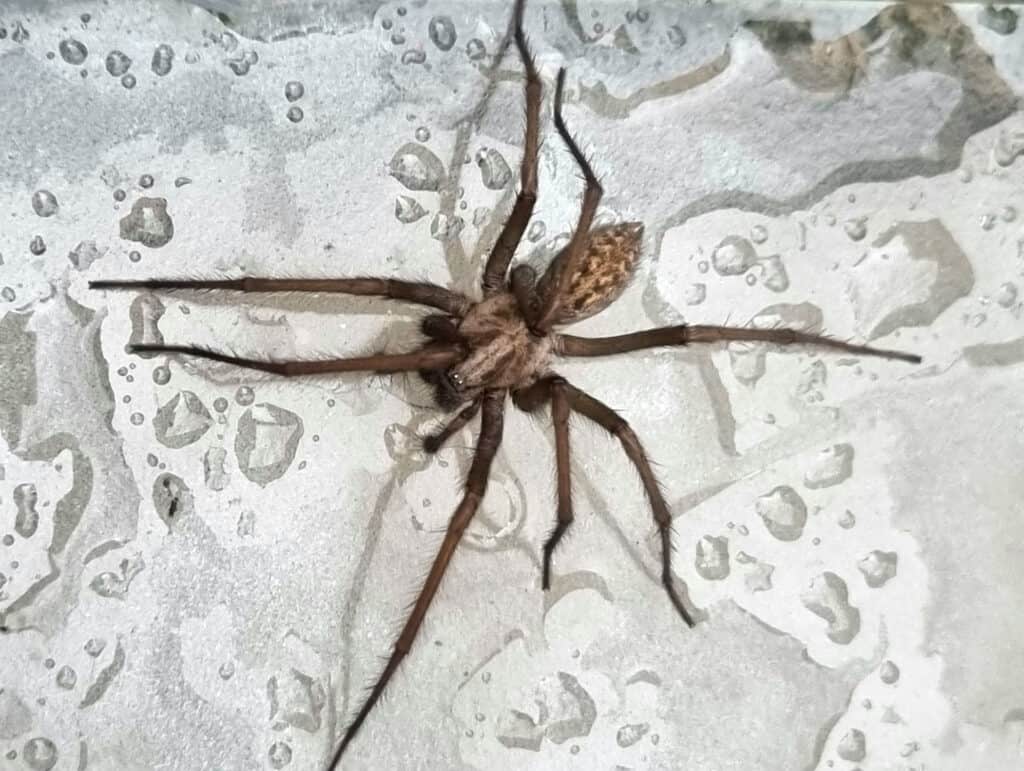Whilst the weather in the UK is notoriously variable, the summer of 2023 has been particularly strange! A heatwave for most of June gave way to an exceptionally wet July and August. This was followed by a significant heatwave at the beginning of September. Such variations in temperature and rainfall were confusing enough for humans but it seems that house spiders have also had their routines put out by the weather.
Giant house spiders have started to invade UK homes in great numbers a little earlier than normal. Amongst them are the giant house spider which can be up to 4 inches in diameter from leg tip to leg tip. Many UK residents are not at all comfortable with spiders of this size and some find the situation disturbing. The spiders have no malicious intent and simply want to find somewhere to mate and then lay their eggs. The influx of spiders has been reported in several UK media publications along with tips on how to keep these creepy crawlies out of your home.

House spiders rarely bite and if they do it does not hurt.
©iStock.com/Kelly McCutcheon
Which Spider Species Are Found in the UK?
According to the Natural History Museum, there are 650 different species of spider found in the UK. Of these, only 12 are recorded as being able to bite and only two or three of them can deliver a bite that would be unpleasant.
The spiders featured in the press reports are house spiders. The British Arachnological Society describes five different species of house spider and these are the typical intruders that people find in their baths!
The largest of these is Tegeneria parietina (Cardinal Spider), with a body size of up to 0.78 inches. Tegeneria domestica (Common House Spider), is a little smaller with a body size up to 0.39 inches. These were both introduced into Britain from the Mediterranean region and are still in the process of expanding their range through to the north of England and Scotland. Another large house spider is Eratigena duellica (Cobweb Spider), with a body size of up to 0.78 inches.
All of these spiders very rarely bite and, if they do, it does not hurt. What makes them scary is their size and how fast they can run across the room. The fact that they come out at night does not help!
How to Keep House Spiders Out of Houses
Experts advise that it is not easy to keep spiders out of houses. They can squeeze through very small gaps. It may help if you close windows and try to block as many gaps as possible. Also, try using draft excluders and insect screens. Nevertheless, there is usually a wave of top tips published at this time of year as terrified householders look for solutions.
Essential oils are a popular option as it is suggested that spiders do not like strong smells. In particular, lavender, eucalyptus, and citronella can be sprinkled on areas such as doors, skirting boards, and windowsills. Another suggestion is to sprinkle mint along windowsills and dark corners. Spiders do not like the taste of chalk. So you could always try drawing a line of chalk around your bed to make sure that they can’t get to you while you sleep!
The photo featured at the top of this post is © Christine Bird/Shutterstock.com
Thank you for reading! Have some feedback for us? Contact the AZ Animals editorial team.







